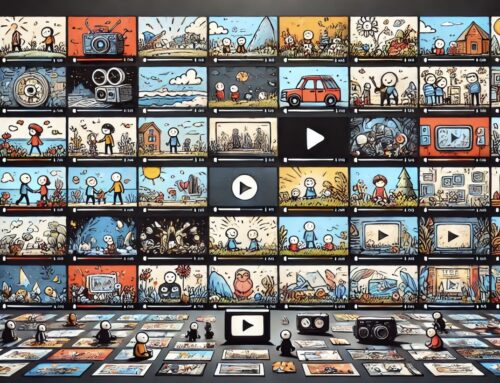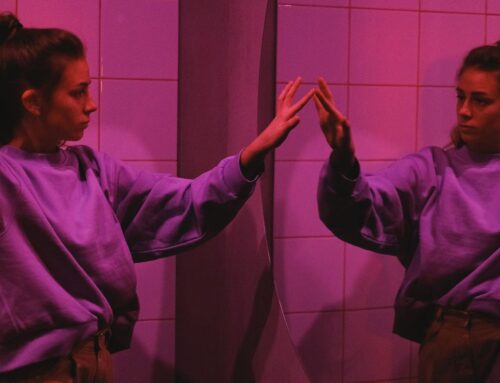Imagine losing everything. Your job. Your health. Your loved ones.
At first, it feels terrifying. But then, something shifts. You realize that right now—this moment—you’re okay. And perhaps, more than okay.
This is the practice of negative visualization. Rooted in Stoic philosophy, it’s an ancient tool designed to build mental strength, foster gratitude, and prepare us for life’s inevitable challenges.
But let’s be clear: negative visualization is not about expecting the worst. It’s not about spiraling into anxiety or fear. It’s a deliberate, controlled practice that strengthens resilience and deepens our appreciation for the present.
Here’s how it works and why it matters.
The Origins: Stoicism and Premeditatio Malorum
Negative visualization comes from the Stoics, the ancient philosophers who were masters of mental fortitude. They called it premeditatio malorum—“the premeditation of evils.”
Seneca, one of Stoicism’s greats, urged us to “project our thoughts ahead of us” and imagine life’s potential setbacks. Death, poverty, illness, rejection. For the Stoics, this wasn’t morbid. It was liberating.
By rehearsing possible hardships, they believed we could desensitize ourselves to fear and focus on what truly matters. Marcus Aurelius practiced it. Epictetus taught it. They knew that imagining loss was the key to valuing what we have.
And modern science agrees.
Why Negative Visualization Works
At its core, negative visualization is a cognitive tool. It uses controlled exposure to hypothetical difficulties to prepare us emotionally and mentally.
Research in psychology supports this. Studies on mental contrasting—a related technique—show that imagining obstacles helps people build realistic strategies and resilience. It’s not about dwelling on disaster; it’s about inoculating ourselves against it.
By briefly contemplating the worst, we remind ourselves how much we already have. And how much we can endure.
This paradox is what makes negative visualization so powerful: it creates relief, not despair.
Relief Through Contrast
Let’s say you imagine losing your home. You picture the discomfort, the uncertainty, the stress. It’s a hard thought to sit with.
But then, you open your eyes. You see your space, imperfect but secure. Suddenly, it feels like a gift.
This contrast—the imagined loss against the reality of what is—can spark profound gratitude. You see your present life in a new light. You stop taking it for granted.
Negative visualization can also reduce fear. When we face imagined worst-case scenarios, we realize they’re often survivable. The unknown becomes known, and with it, less scary.
I unwittingly practiced negative visualization for years, imagining someone trying to rob me on public transport, or an armed attacker entering the yoga studio where I was lying in Shivasana and opening fire, or my house burning down. And it is empowering because that phantom version of myself acts swiftly and decisively in the face of catastrophe. I feel confident knowing that in the worst situations, I won’t freeze. I will act rather than react. I’ll engage rather than crumple under the pressure. Best of all, when the visualization is complete, I’m back in the present moment, where life is calm and safe. I’m not being attacked or rescuing loved ones from a house fire. I’m grateful, relieved, and content.
The Line Between Visualization and Anxiety
But what about when negative visualization crosses into worry?
This is an important distinction. Negative visualization is intentional and time-bound. You choose a moment to practice it. You visualize, reflect, and then let it go.
Anxiety, on the other hand, is involuntary. It’s the mind spinning with “what-ifs.” Where negative visualization gives you control, anxiety takes it away.
Here’s the key difference: negative visualization ends with a sense of clarity or gratitude. Anxiety leaves you stuck in fear.
To avoid the trap of worry, it helps to set boundaries. Practice negative visualization briefly—just a few minutes. And always follow it with a grounding ritual, like gratitude journaling or deep breathing.
Applications in Mental Health
For mental health, the benefits of negative visualization are profound.
It can reduce fear of the unknown. By rehearsing potential challenges, you build confidence in your ability to handle them.
It enhances gratitude. Imagining loss makes you see your life with fresh eyes. Research from The Journal of Positive Psychology has shown that gratitude practices improve overall well-being and reduce depression.
It also helps with emotional regulation. When life throws curveballs, you’re less likely to panic because, in some ways, you’ve already been there—mentally, at least.
Negative Visualization Meets Exposure Therapy
Negative visualization also aligns with other methodologies.
In therapy, it’s echoed in exposure therapy, where controlled exposure to fears helps reduce their intensity. In mindfulness, it parallels the idea of “befriending discomfort” to stay present with difficult emotions.
Even productivity tools like mental contrasting borrow from this idea. By imagining obstacles, you can plan better and stay motivated.
But there’s another layer to this practice—one rooted in biology and resilience science. It’s called hormesis.
Hormesis is the principle that small doses of stress or poison can strengthen the system. Think of traditional vaccines, where a tiny amount of a virus trains the immune system to fight it. Or strength training, where controlled stress on muscles triggers growth and adaptation (discover antifragility).
In the same way, negative visualization works as a mental “microdose” of adversity. By exposing yourself to imagined hardships in controlled, intentional ways, you build the psychological equivalent of calluses. Over time, you’re better equipped to handle real-life challenges.
This principle is seen in nature everywhere. Plants exposed to mild stress—like limited water—develop deeper roots. Human bodies adapt to heat, cold, and even small amounts of toxins through hormesis. Negative visualization applies this same concept to the mind.
The common thread? Facing discomfort head-on, instead of avoiding it.
Whether in physical, emotional, or mental domains, the lesson is clear: small, deliberate doses of discomfort can make us stronger. Negative visualization is the mental equivalent of stepping into the cold water for a moment. It’s uncomfortable—but it prepares us for the bigger waves ahead.
How to Practice Negative Visualization
Start small.
Choose a quiet moment. Think of something you value—your health, your job, your relationships. Now, imagine losing it. Feel the loss. Picture life without it.
Pause. Reflect on what it would mean. Then, return to the present. Notice what’s still here.
Finish with gratitude. Remind yourself: this isn’t about dwelling on loss. It’s about seeing what you already have.
If you’re new to the practice, try once a week. Over time, it may feel natural to integrate it into your life.
Imagine that there has been a natural disaster, perhaps a solar flare. You’re in a refugee camp. You’ve lost everything: possessions, family, access to cash. The internet is down. It is all gone. You’re released into a strange land, a place you’ve never been before, with nothing. All you have is your thoughts, your emotions, yourself.
If you contemplate this for some time, there is a strange liberation. Your consciousness remains. You are nobody, but who will you become?
A Tool for Resilience
Life is unpredictable. Negative visualization doesn’t shield us from pain, but it gives us tools to endure it. It makes us stronger, more present, more grateful.
The Stoics saw this clearly. They knew that imagining life’s fragility could reveal its beauty. Seneca put it best: “He who has anticipated the coming of troubles takes away their power when they arrive.”
In a world full of distractions and fears, negative visualization is a simple, profound way to cultivate resilience.
Try it. You might find that life, as it is, is already enough.
References:
- Seneca, Letters to Lucilius
- The Journal of Positive Psychology (studies on gratitude and mental health)
- Research on mental contrasting by Gabriele Oettingen
This practice is not about pessimism. It’s about strength. A quiet, deliberate strength that helps you face the future, no matter what it brings.
✨ Start With Values
Receive $400 of bonus resources with any order of my new book,Start With Values (Penguin Random House).
Written by : Brad Hook
Brad Hook is a writer, podcaster, speaker and entrepreneur. He helps individuals and teams achieve sustainable high performance through inspiring workshops and a powerful suite of digital tools. Discover his new book, Start With Values (Penguin Random House), — available now!
Stay connected with Brad
BE NOTIFIED ABOUT EVENTS and receive the latest tools and tips first
We will never share your email with others.







